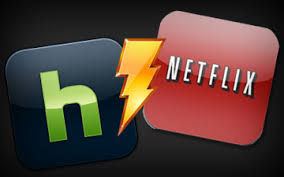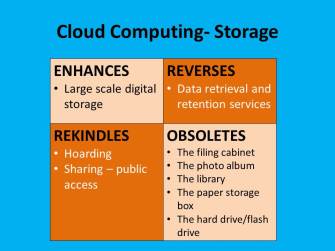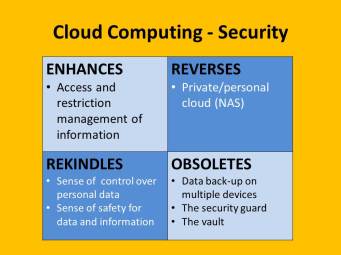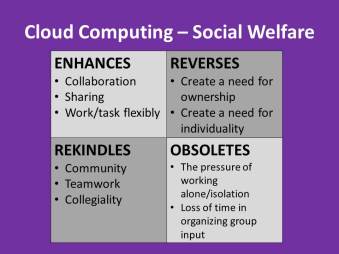Here is a sample Thinglink created for my readers.
Mouse over the image below and click on any of the highlighted points.
Here is a sample Thinglink created for my readers.
Mouse over the image below and click on any of the highlighted points.
Click on My Presentation to view media.
I can remember the days when my friends and I would save from our weekly lunch allowance in order to rent DVD’s on a Friday night. In those days we would congregate at Jude’s house to choose from the wide array of titles his parents offered to “rich” young kids and overworked adults seeking a cinematographic escape – all at a cost! We are a long way away from those kinds of experiences today. In fact, when I wanted to watch Total Recall (2012) recently, I simply brought it up on my mobile via the Netflix app.

 Every time I look at these forces that impact and affect technology emergence, I am convinced that there are no simple answers. In examining the DVD vs Video-On-Demand (VOD) phenomenon against Arthur’s (1996) increasing returns principle and the principle of red queens (Thornburg, 2014g), I am left with more questions than answers. Thornburg (2014g) defines the red queen in a way that is similar to his description of Arthurs increasing returns principle (Thornburg, 2014e). Both are described as the results of competition between two key or major technologies. The results of both have been described as having significant impact (Thornburg, 2014g). There’s an element in both principles that lends itself to chance or some unforeseen but impactful event or variable (something gives one or both an advantage). Both are vulnerable to the force of disruptive technologies (Louie, 2009; Stewart, 2012) and both forces bring about the obsolescence of some technology.
Every time I look at these forces that impact and affect technology emergence, I am convinced that there are no simple answers. In examining the DVD vs Video-On-Demand (VOD) phenomenon against Arthur’s (1996) increasing returns principle and the principle of red queens (Thornburg, 2014g), I am left with more questions than answers. Thornburg (2014g) defines the red queen in a way that is similar to his description of Arthurs increasing returns principle (Thornburg, 2014e). Both are described as the results of competition between two key or major technologies. The results of both have been described as having significant impact (Thornburg, 2014g). There’s an element in both principles that lends itself to chance or some unforeseen but impactful event or variable (something gives one or both an advantage). Both are vulnerable to the force of disruptive technologies (Louie, 2009; Stewart, 2012) and both forces bring about the obsolescence of some technology.

That said, I am left to decide if the battle between DVD and VOD is an example of increasing returns or red queens. Based on my own reflection I am going to go out on a limb and say it is both and it is neither. Arthur (1989) posits that “When two or more – increasing-return technologies ‘compete’ then, for a ‘market’ of potential adopters, insignificant events may by chance give one of them an initial advantage in adoptions(p. 116). I can definitely see this in the case of Netflix and Blockbusters. I can also make an informed decision that one “per chance” occurrence that tipped Netflix over the edge of success was the growing proliferation of smart devices. But take the case of Netflix vs Hulu and recognize how that rivalry pushed DVD use and sales to the edge of extinction (Spangler, 2016). This is exactly what Thornburg (2014g) describes as the red queen effect – as the competition between two technologies leave other competitors behind.

It is hard to look at the VOD/DVD competition without looking at other variables such as increase technological capability (when Netflix started it used DVDs) as well as changing consumer preferences and tastes. Satell (2014) even suggests that flawed business models played a significant role in the demise of the DVD industry. Despite that however one is able to see both forces at play (increasing returns and red queens) in this particular fight. And it is interesting to watch too as both technologies can easily fit in one of McLuhan’s tetrad analysis:
Tags: DVD, VOD, Video on demand, increasing returns, red queens, disruptive, tetrad, McLuhan,
References
Arthur, W. B. (1996). Increasing returns and the new world of business. Harvard business review, 74(4), 100-109.
Arthur, W. B. (1989). Competing technologies, increasing returns, and lock-in by historical events. The economic journal, 99(394), 116-131.
Laureate Education (Producer). (2014e). David Thornburg: Increasing returns [Video file]. Baltimore, MD: Author.
Laureate Education (Producer). (2014g). David Thornburg: Red queens [Video file]. Baltimore, MD: Author.
Louie, G. G. (2009). Persistent forecasting of disruptive technologies.
Satell, G. (2014). Forbes Welcome. Forbes.com. Retrieved from http://www.forbes.com/sites/gregsatell/2014/09/05/a-look-back-at-why-blockbuster-really-failed-and-why-it-didnt-have-to/#35774ac3261a
Spangler, T. (2016). The Slow Death of Redbox: Why the Kiosk Colossus Is the Next Blockbuster. Pmcvariety.files.wordpress.com. Retrieved from https://pmcvariety.files.wordpress.com/2016/02/redbox-failing.jpg?w=670&h=377&crop=1
Stewart, D. (2012). The Red Queen’s Deadly Effect on Innovation – Darin Stewart. Darin Stewart. Retrieved 4 November 2016, from http://blogs.gartner.com/darin-stewart/2012/08/06/the-red-queen-effect/
Thornburg, D. (2013d). Red queens, butterflies, and strange attractors: Imperfect lenses into emergent technologies. Lake Barrington, IL: Thornburg Center for Space Exploration.
Nino Varsimashvili is credited with the words “life is the muse which perfectly rhymes…”
As I reflect of technology emergence, I must say I am pleased with the progress I am making through this course. I am recognizing that technology emergence is driven by a number of complementary and sometimes opposing forces that must be considered when there is any reflection on or prediction on emergence. One of those forces is that of the rhyme of history.
When the impact of a new technology revives or reawakens something from the distant past, we refer to that as a rhyme of history (Laureate Education, 2014h). This phenomenon is called a rhyme of history because of the way the “affect” of the technology resembles the kind of impact a technology from the past has had.
In the course Trends and Issues in Educational Technology, I learned that issues are borne out of problems, usually those recurring problems that mankind tend to continually innovate around. I am recognizing now that the rhymes of history, as a driving force for technology emergence, is itself fed by that need we have as human beings to address the issues of our times. The fact that, as humans we are basically the same, despite our differences (even differences in eras and generations), means that some of our problems are the same and some of our issues are the same. As a result the ways we try to resolve those issues, from generation to generation, will resemble each other – they will rhyme.
I am also recognizing that evolutionary force will push a technology into existence, but its impact will carry it along the emergence continuum.
Recently I was asked by a friend to make  a short presentation on the impact of the printing press on the society of 1439. In my quick research and analysis, I found the following impact:
a short presentation on the impact of the printing press on the society of 1439. In my quick research and analysis, I found the following impact:
As I reflected, I recognized glaring similarities with the e-book of today (Hillesund, 2001; Klaava”, 2016). So, you guessed it, I took out the tetrad (Laureate Education, 2014f) to further examine these two important technology breakthroughs. (See 2-in-1 tetrad above.)
For more on e-books check out:
http://klaava.com/books/gutenbergs-printing-press-revolutionized-book-business-just-like-ebooks-are-doing-now/
http://faze.ca/the-future-of-reading-e-books/
Reference
Ebook timeline. (2002). the Guardian. Retrieved from https://www.theguardian.com/books/2002/jan/03/ebooks.technology
Gutenberg’s printing press revolutionized book business just like ebooks are doing now | Klaava. (2016). Klaava.com. Retrieved from http://klaava.com/books/gutenbergs-printing-press-revolutionized-book-business-just-like-ebooks-are-doing-now/
Hillesund, T. (2001). Will E-books change the world?. First Monday, 6(10). Retrieved from http://firstmonday.org/ojs/index.php/fm/article/view/891/800
Laureate Education (Producer). (2014h). David Thornburg: Rhymes of history [Video file]. Baltimore, MD: Author.
Laureate Education (Producer). (2014f). David Thornburg: McLuhan’s Tetrad [Video file]. Baltimore, MD: Author.
The Gutenberg Galaxy. (2016). Google Books. Retrieved from https://books.google.com.jm/books?id=zFc5n4CbsbwC&printsec=frontcover&source=gbs_ge_summary_r&cad=0#v=onepage&q=crude&f=false
I was one of the relatively early adopters of cloud based services. For some time, I had had all my digitized data stored on a bunch of pocket/flash drives tied to a string. Then I lost it all. I mourned for weeks and it cost me some thousands of dollars on my bonus check that year as I lost critical evidence of work done. I walked away from that experience knowing that it was the last time I would interact with such technology. I have not used a flash drive devise in approximately eight years.

Cloud computing involves the storage of files on remote virtualized servers (Wickremasinghe, Calheiros, & Buyya, 2010, April). The concept has been around for some time but became very popular about 2005 (Timmermans, Stahl, Ikonen, & Bozdag, 2010). In using McLuhan’s tetrad (McLuhan & McLuhan, 1988) to analyse cloud technology, I have come to realize that the results of this kind of analysis is heavily dependent on the perspective from which the analysis is undertaken.
Lessons Learned
As I sat down to create my “cloud computing tetrad”, I realised that I had themes that could intertwine on one hand as well as could be grouped into categories on the other. As I created the three tetrads based on an analysis of the impact of could computing on storage, security and social welfare, I found that the tetrad encouraged critical thinking about the technology. I was also able to conceptualize one viable “spin-off” technology and look more deeply at the life impact of the technology. I was also able to see the potential for innovation opportunities in examining what a technology rekindles.

What Cloud Computing Enhances
The technology facilitates large scale digital storage (“Cloud Computing Tetrad”, 2016) with the capability of access management. Through the management of access and retrieval, cloud computing creates the space for collaboration on (“McLuhan’s Tetrad | Thoughts on Emerging and Future Technology”, 2016), and the sharing of, data and information. This is done within the context of flexibility, as individuals control when, where and how they collaborate with each other.
What Cloud Computing Obsoletes
The cloud in effect nullifies every kind of on-site storage system, from filing cabinets to flash drives. It eliminates the number of back-up storage devices formally utilized to secure data and removes the pressure of working alone through collaboration capabilities.
What Cloud Computing Rekindles
 Apart from revitalizing concepts such as community, collaboration and team work(“McLuhan’s Tetrad | Thoughts on Emerging and Future Technology”, 2016), cloud computing helps persons to regain control over personal data and re-establishes a sense of security regarding such data. It also re-introduces the hoarding of data and information as persons are able to store massive amounts of digitized files.
Apart from revitalizing concepts such as community, collaboration and team work(“McLuhan’s Tetrad | Thoughts on Emerging and Future Technology”, 2016), cloud computing helps persons to regain control over personal data and re-establishes a sense of security regarding such data. It also re-introduces the hoarding of data and information as persons are able to store massive amounts of digitized files.
What Cloud Computing Reverses
This technology is already being replaced by the private or personal cloud – that promises the flexibility the of “the cloud” with less security vulnerability issues to contend with. (“Cloud Storage – Online Data Storage | Google Cloud Platform”, 2016). I also believe that in the future cloud storage expansion requirements will facilitate the development of software that provides automatic data retrieval and retention services. I also believe that in the future, the prevalence of web-based collaboration will create a need for privacy, ownership and individuality.
References
Cloud Computing Tetrad. (2016). prezi.com. Retrieved 23 September 2016, from https://prezi.com/e8ogpduavyo5/cloud-computing-tetrad/
Cloud Storage – Online Data Storage | Google Cloud Platform. (2016). Google Developers. Retrieved from https://cloud.google.com/storage/?utm_source=google&utm_medium=cpc&utm_campaign=2015-q2-cloud-na-storage-skws-freetrial-en&gclid=CjwKEAjwgo6_BRC32q6_5s2R-R8SJAB7hTG-XD2ApMVRAEapqw_KtLTt-C__vMvb_tCRgv7JkcqE6hoC7Xbw_wcB
McLuhan, M & McLuhan, E (1988). Laws of media: The new science. Toronto: University of Toronto Press.
McLuhan’s Tetrad | Thoughts on Emerging and Future Technology. (2016). Orenmusings2.wordpress.com. Retrieved from https://orenmusings2.wordpress.com/tag/mcluhans-tetrad/
Timmermans, J., Stahl, B. C., Ikonen, V., & Bozdag, E. (2010). The ethics of cloud computing: A conceptual review
Wickremasinghe, B., Calheiros, R. N., & Buyya, R. (2010, April). Cloud analyst: A cloudsim-based visual modeller for analysing cloud computing environments and applications. In 2010 24th IEEE International Conference on Advanced Information Networking and Applications (pp. 446-452). IEEE.